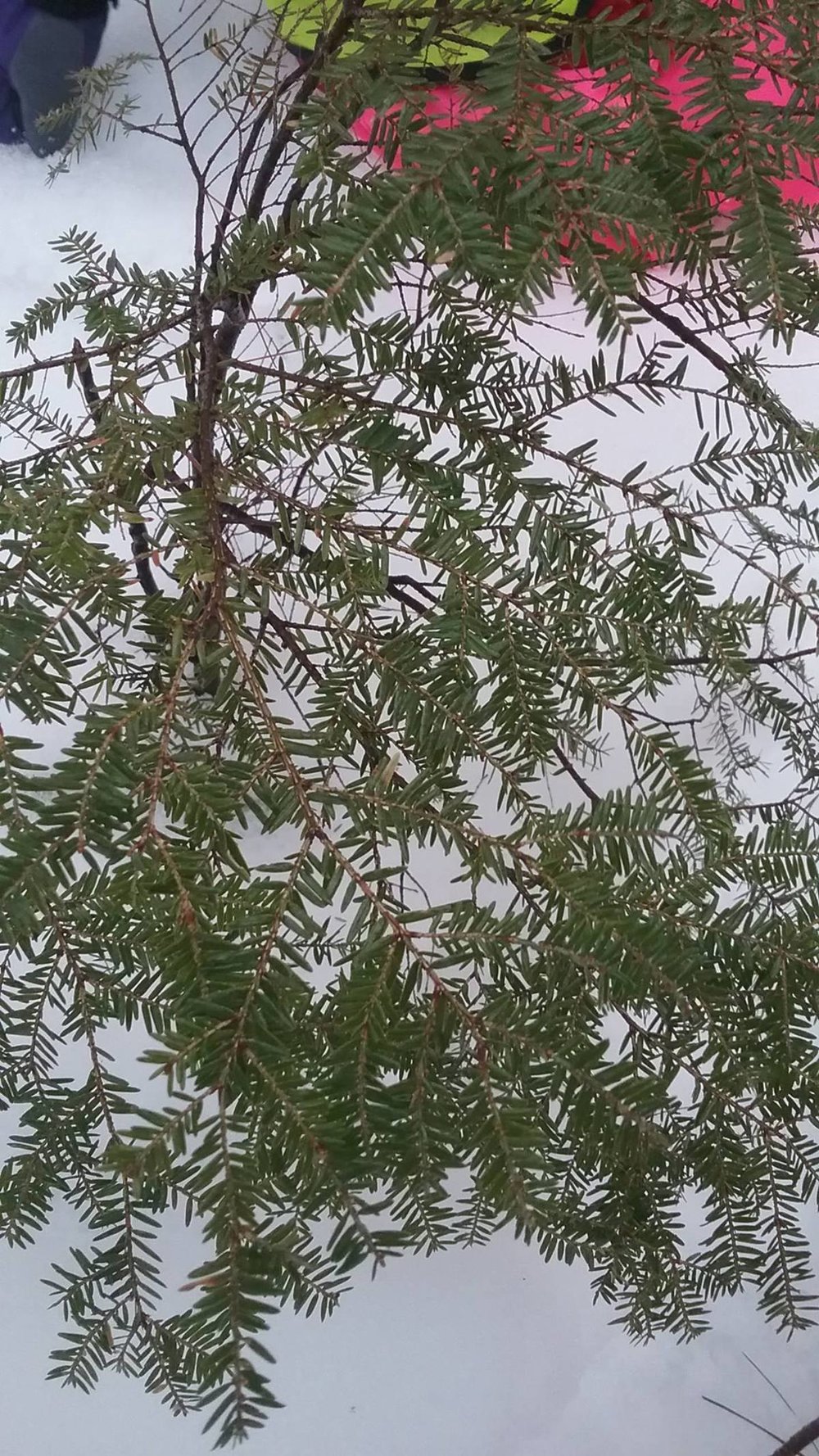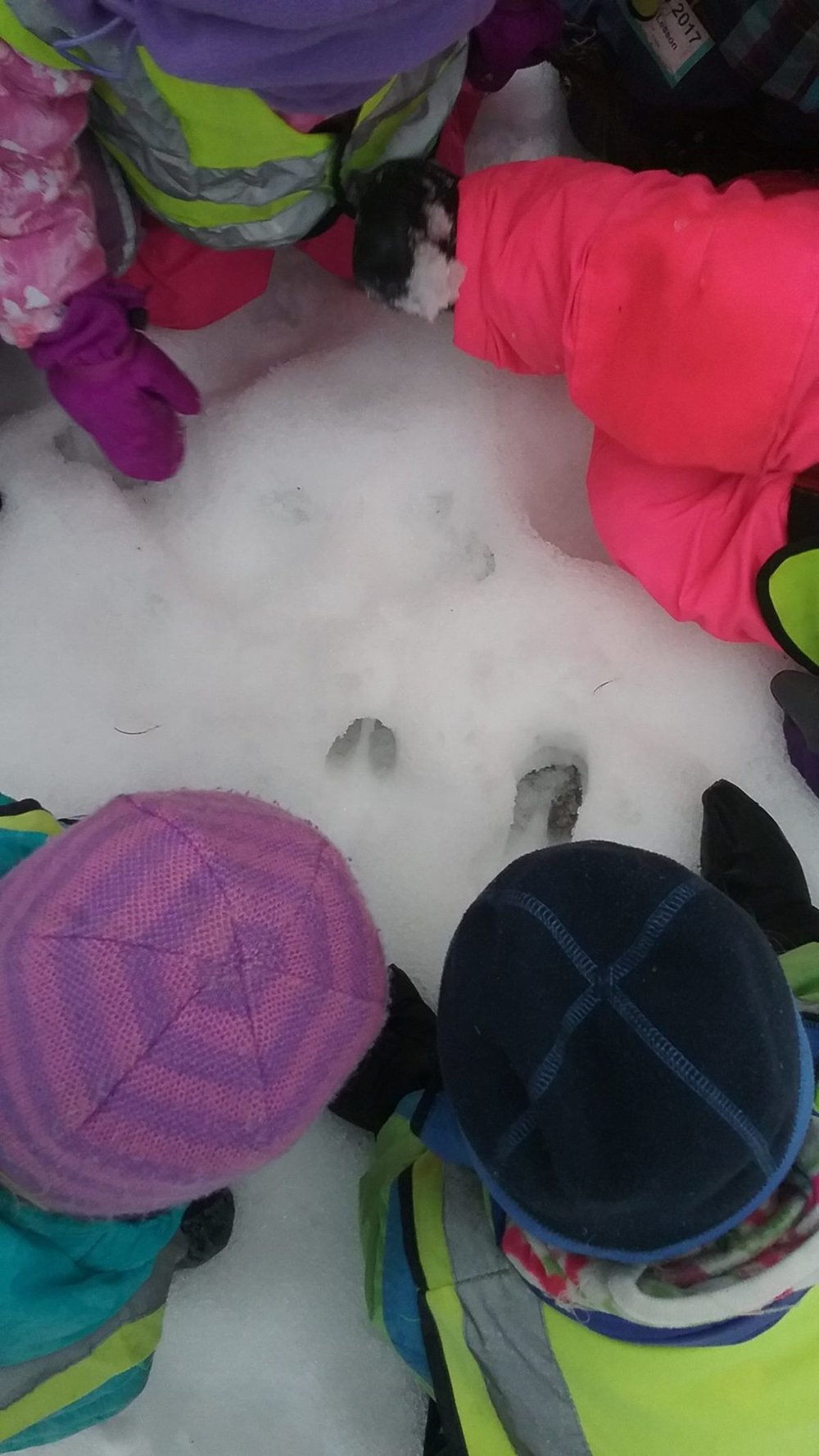Notes from the Naturalist Week 26:The Nature Preschool at HCMA
We are still enjoying full on winter conditions up at the lodge. There was a little ice on the road and fog in the air as I pulled in this morning. There is something special about gray, damp days in a lodge. But we did manage to balance our time both in and out with the needs of the children. The dampness of the day certainly proved to cover us all by the time we ended our exploration outside. And let there be no doubt, children who play hard eat a LOT!


As our Nature Preschoolers have become more comfortable with the surrounding Slim Baker Area and their level of ease walking in the woods, we took the time to talk about being safe in the outdoors once again. As a rule the children must always be able to see us and we must always be able to see them. We talked about checking in with a teacher as a way of staying safe and also about the importance of what to do if we need their immediate attention. As with all of our lessons or works, we have to balance the children’s maturity and readiness to participate in all that we plan. And today was the perfect time to bring out our whistle. Our whistle is used as a safety tool in much the same way as our drum. Our drum signals a time of transition where the whistle signals immediate and halting attention. We blow the whistle with three short notes, signaling all attention on teachers and to immediate sit down. This type of protocol allows the teacher to make a quick assessment of the situation and determine the next step. Please talk to your children about being safe outdoors. We love to hear the children come back to school with such great ownership in sharing their stories with families at home!


Over the last two months we have made note of the Deer tracks that are always present in our gathering area at school. And today was no exception. Sure enough we found them again. Children have such an affinity and deep curiosity for all that takes place in their world. As soon as the word goes out that an animal track has been spotted, watch out or you will get trampled by ten preschoolers!
“Of all the evergreens in the winter woods, eastern hemlocks are the friendliest. During the short, dark days of winter—when we are tempted to stay inside our heated spaces—the hemlock calls us to come out and play. What makes the eastern hemlock so special to winter-weary humans? Its short, flat needles are soft to the touch (not prickly like spruce) and its trunk doesn’t gum up your hands with pitch. Hemlocks are shade loving and their lower branches can live for a long time, making them the perfect trees for finding or building shelters made of sticks and leaves. A mature hemlock creates such dense shade, and its needles cause the soil to be so acidic, that few other plants can grow underneath. As a result, hemlock groves create their own micro-environment—cool, open, and dark. Perfect places for hiding, resting, and playing games.”

“Hemlock groves are magical to non-human animals, too. Because hemlock branches hold so much snow, snow depths beneath the trees are significantly lower. Deer often bed down underneath these trees, taking advantage of shallower snow and sheltering branches. Treat yourself to an early morning snowshoe or hike. You may be able to follow deer tracks from hemlock to hemlock, finding packed snow outlining the shape of a deer underneath each one. Many animals eat hemlock. (In case you were wondering, eastern hemlock is not the kind of hemlock that poisoned Socrates.) Grouse and rabbits eat buds and needles. Red squirrels and mice chew off the scales of the tiny hemlock cones to get at the seeds underneath. Deer will also eat hemlock foliage and twigs as high up as they can reach. “-http://blogs.massaudubon.org/yourgreatoutdoors/have-you-hugged-a-hemlock-lately
We love the trees that surround us in the Slim Baker Area and so do the wildlife! Hemlock, Pine, Oak, Maple….